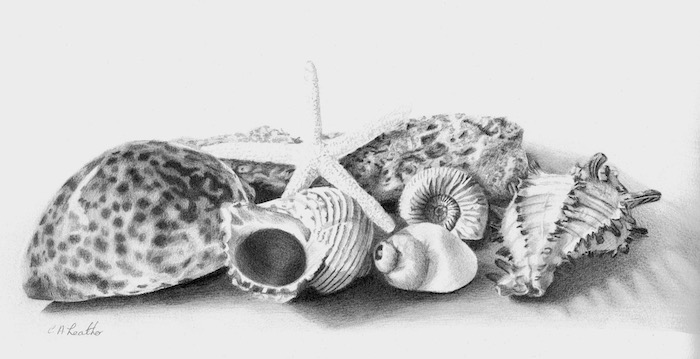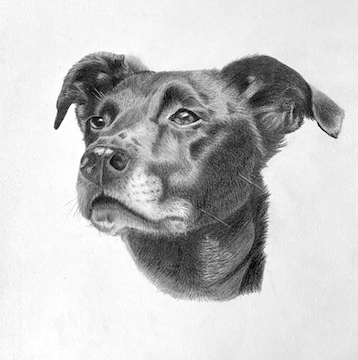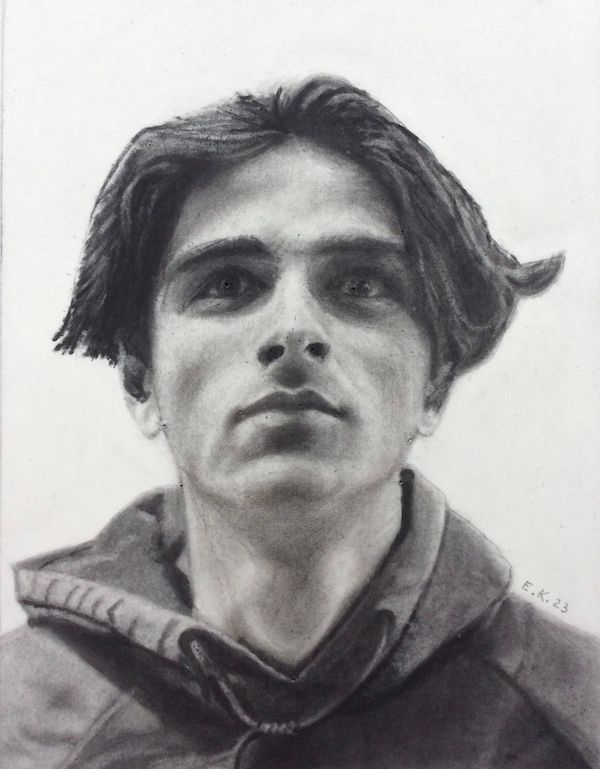Choosing the Perfect Types of Drawing Pencil: Finding the Right Tool for Your Artistic Vision
Every artist should include pencils as a fantastic tool in their kit. They might seem simple, but they can create amazing pieces of art.
Various types of drawing pencils offer unique characteristics. Let's explore and learn how to use them.
Pencil drawing revolves around an exciting interplay between two elements:
- Hardness and softness
- Precision and boldness
We will examine these elements in more detail below.
So, are you ready to start your investigation? It’s time to unravel the secrets of the different types of pencil and discover which one truly resonates with your artistic style.
Think about whether you prefer the control of sketching details, shapes, or outlines with a lighter touch and slower movements for precision. Or do you prefer the spontaneity of making broad strokes and pressing harder to create unexpected and exciting results?
Graphite Pencils
 Still life in a variety of graphite pencils by Carol Leather
Still life in a variety of graphite pencils by Carol LeatherArtists most commonly use graphite pencils.
Did you know that manufacturers produce graphite pencils with varying qualities? They come in different hardness levels, ranging from 9H (hardest) to 9B (softest).
Some artists find 9H pencils essential for achieving intricate details and subtle shading, as the fine and precise lines are ideal for capturing the smallest nuances in a drawing.
Others prefer softer pencils like 2B or 4B for their ability to produce bolder lines, richer tones, and easier blending and shading, which can be advantageous for realistic artwork.
 Toby drawn in graphite by Carol Leather
Toby drawn in graphite by Carol LeatherOthers prefer softer pencils like 2B or 4B for their ability to produce bolder lines, richer tones, and easier blending and shading, which can be advantageous for realistic artwork.
Ultimately, the artist's style and desired effect determine the choice of pencil hardness.
Experimentation is key to discovering what works best for you.
Many artists use a combination of different pencil hardnesses to achieve a greater variety of textures and tonal values in their artwork.
Exploring the Versatility of Charcoal Pencils
 The original photo that Ed worked from was taken by artist Mel Williamson
The original photo that Ed worked from was taken by artist Mel Williamson Ed Kramer's charcoal pencil drawing based on the photo
Ed Kramer's charcoal pencil drawing based on the photoBut graphite pencils aren't the only option for artists.
Charcoal pencils offer a different experience. Their rich, dark tones and smudgy texture create a distinct look that artists often favour in expressive and moody pieces.
However, they can be messy and difficult to control compared to the precision of graphite pencils, which may frustrate some artists.
Creating a wide range of values with charcoal requires skill.
Some artists appreciate the unpredictable and expressive qualities of charcoal, embracing the messy and spontaneous nature of the medium.
Experimenting with different mediums can help artists discover which one suits their style and vision best.
The Pros and Cons of Using Mechanical Pencils
Mechanical pencils offer precision and convenience with their consistent, sharp point, so you don't need to sharpen them constantly.
However, the thin lead is prone to breakage under excessive pressure, which can be frustrating for artists who prefer bolder strokes or varying pressure levels.
The changing weight of a wooden-cased pencil after each sharpening can affect how it feels in the artist's hand and impact their drawing technique.
Some artists appreciate how mechanical pencils challenge them to adapt, while others prefer wooden-cased pencils' consistent weight and balance for precision and control.
Investigate the Unique Qualities of Carbon Pencils
Artists value carbon pencils for their ability to create deep shadows and intense blackness without the reflective quality of softer graphite options.
However, their intense blackness can make it harder to achieve subtle gradations and lighter tones, which may not be ideal for highlights or nuanced shading.
Carbon pencils excel at creating dark shadows, but their high carbon content can make it challenging to achieve the desired level of brightness in lighter areas or highlights, resulting in a limited tonal range.
The preference for carbon pencils depends on an artist's personal style and the specific requirements of their artwork. Some enjoy their boldness and limitations, while others may find them too restrictive and opt for more versatile options.
It's Your Choice
The world of pencils is as diverse and varied as the artists who wield them.
Artists can explore, experiment with, and master each pencil type's unique qualities and challenges. The magic lies not in the pencil itself, but in the hand that holds it.
Enjoy the process of discovery and continuous learning, whether you're a seasoned artist or a beginner. Dare to explore, make your mark, and let your art speak.
Start sketching your dreams today!
- Home
- Graphite & More